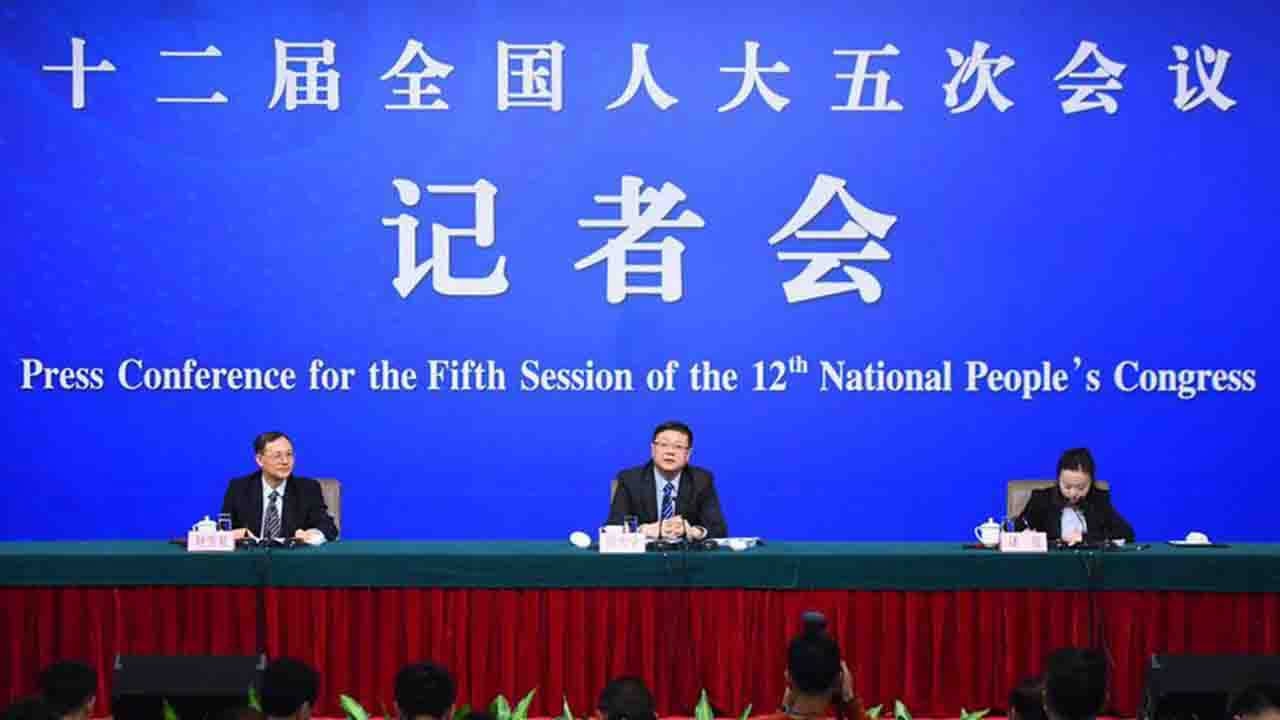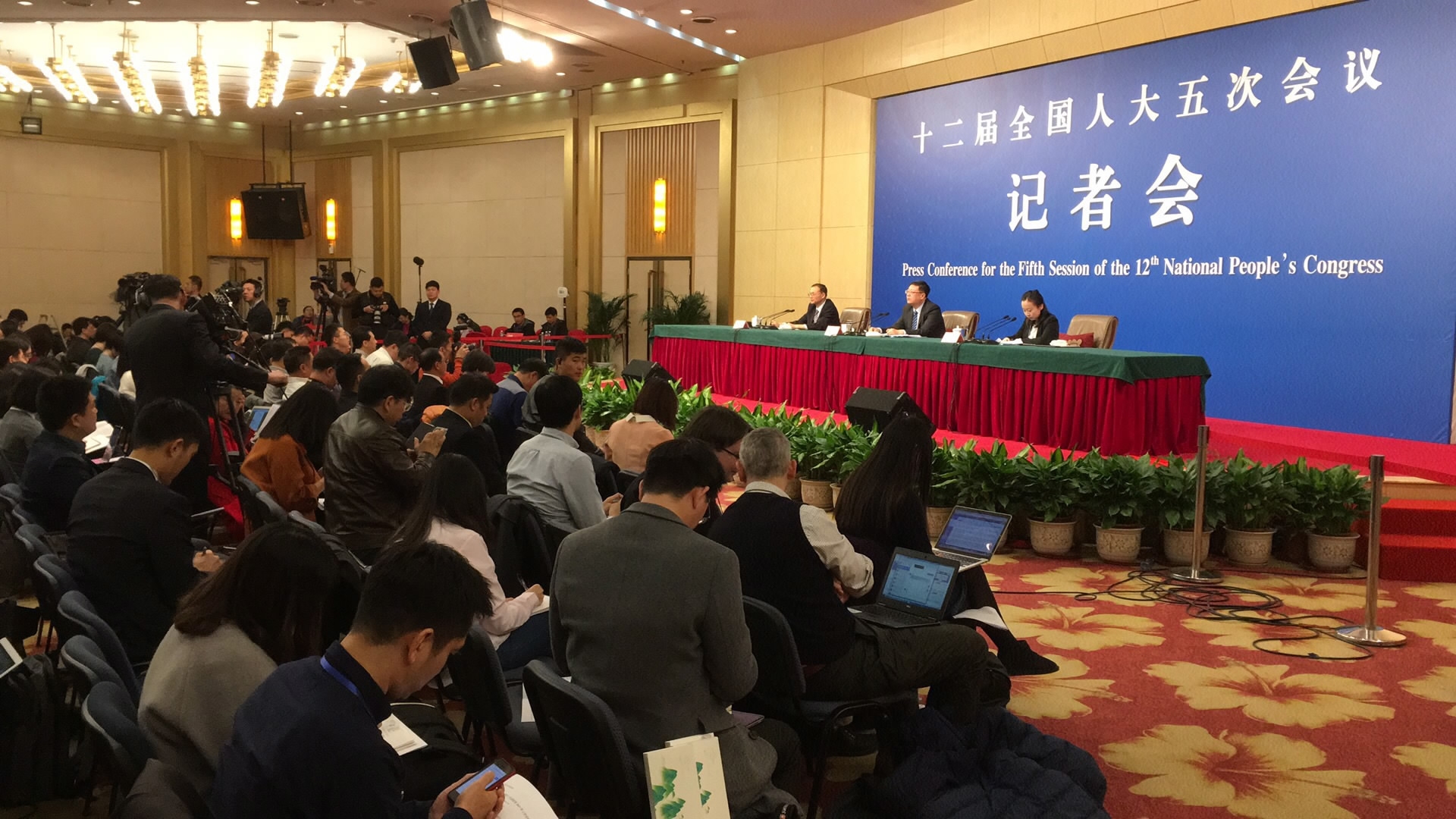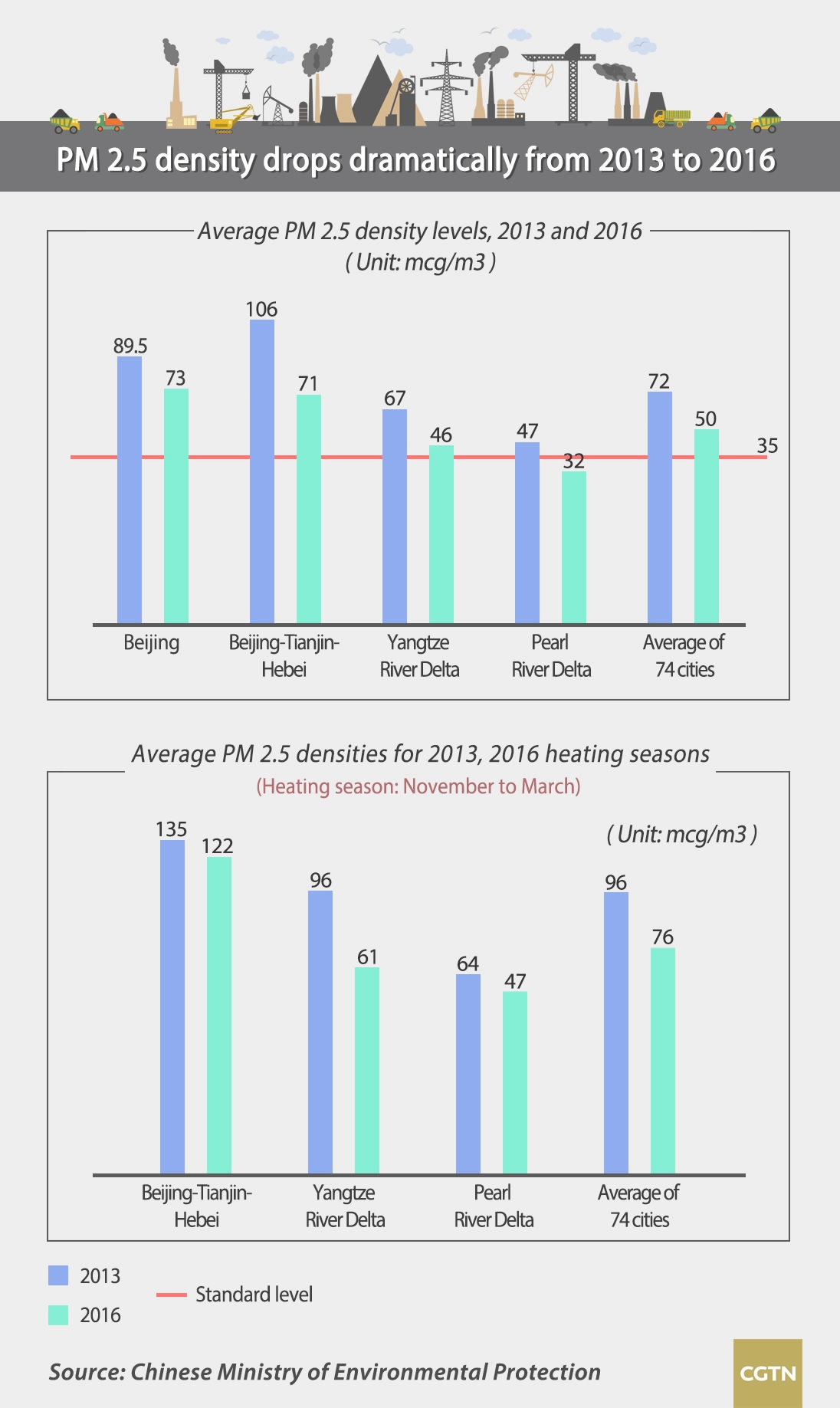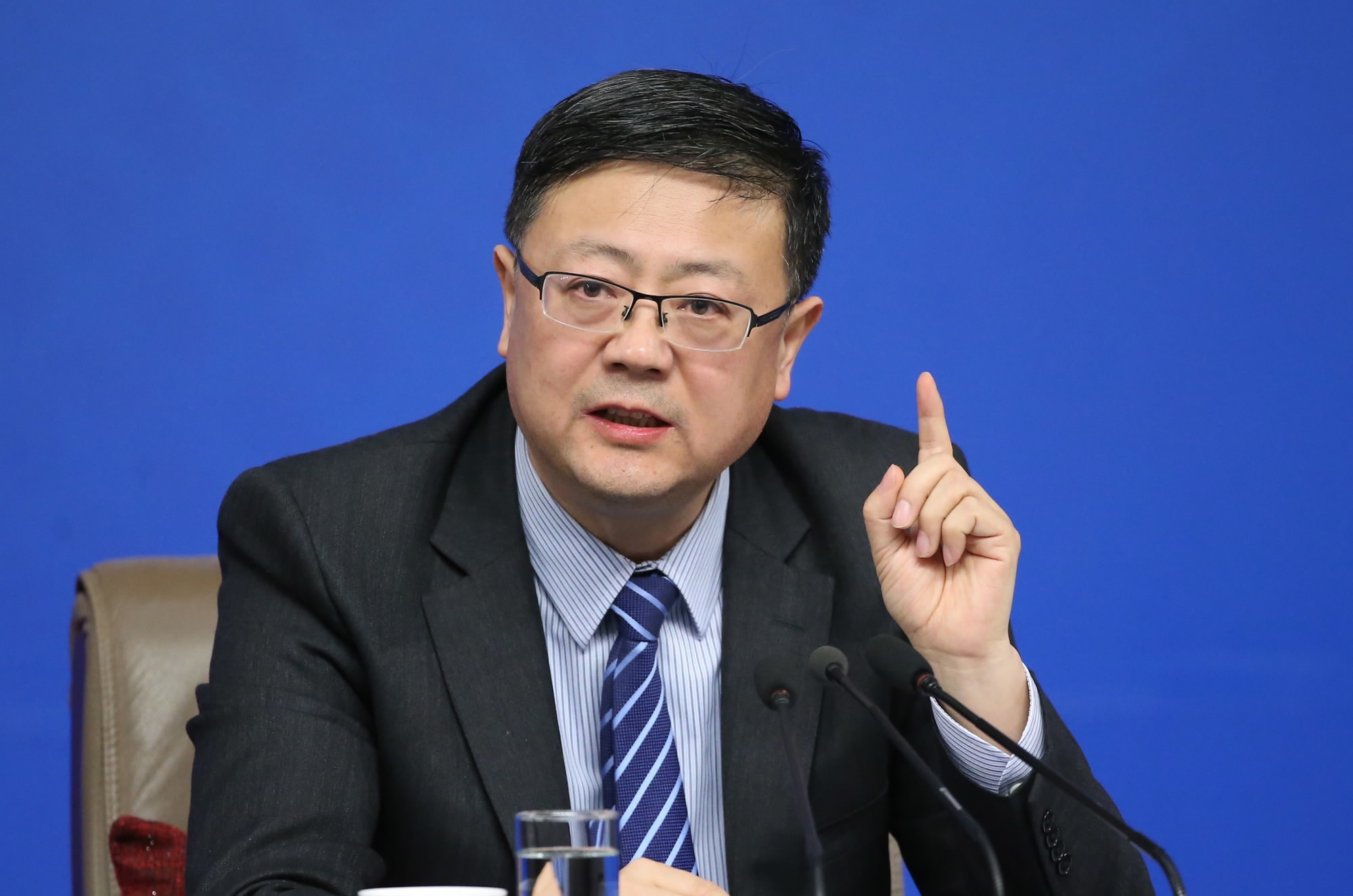
Politics
20:05, 09-Mar-2017
Sigh of relief: China welcomes cleaner air conditions
Updated
11:00, 28-Jun-2018

A total of 74 major cities in China have seen significant improvement in air conditions since 2013, said China's top environmental watchdog on Thursday.
“In 2016, the average PM 2.5 density of 74 major cities was 50 micrograms per cubic meter, down 30.6 percent from 2013. In Beijing, the density in 2016 was 73 micrograms per cubic meter, an 18 percent drop from that in 2013,” said Chen Jining, Chinese minister of environmental protection, at a press conference on promoting environmental protection on Thursday in Beijing.
Progress in the air
In the past three years, days of good air quality increased in the Beijing-Tianjin-Hebei region, the Yangtze River Delta and the Pearl River Delta, Chen said.

Chinese Minister of Environmental Protection Chen Jining attends a press conference on promoting environmental protection for the 5th session of the 12th National People's Congress (NPC) in Beijing, March 9, 2017. /CFP Photo
Chinese Minister of Environmental Protection Chen Jining attends a press conference on promoting environmental protection for the 5th session of the 12th National People's Congress (NPC) in Beijing, March 9, 2017. /CFP Photo
The PM 2.5 density in the three regions all dropped by more than 30 percent in 2016 from 2013. The improvement shows that China is "on the right path" for addressing air pollution, Chen said.
“Compared with developed countries in air pollution control, we are not slow and are even more effective than some.”
It has been three years since the issuing of the Air Pollution Prevention and Control Action Plan. While the achievements are remarkable, the campaign against air pollution cannot be completed in just two or three years, but will take time, he added.

CGTN Graphic
CGTN Graphic
Challenges remain
“Despite the gratifying results, we will not shy away from the problems that we still have to face,” Chen said. He pointed to less-significant progress made in controlling pollution from winter heating systems, especially in the Beijing-Tianjin-Hebei region.
“First, climatic abnormality last winter created unfavorable conditions for the diffusion of contaminants. Second, we still need to intensify efforts to control air pollution in winter.”
The average PM 2.5 densities for the 2016-2017 heating season are as follows, measured in micrograms per cubic meter:
-Beijing-Tianjin-Hebei region: 122, a 9.6 percent decline from 2013
-Yangtze River Delta: 61, a 36.5 percent decline from 2013
-Pearl River Delta: 47, a 26.6 percent decline from 2013
-74 major cities: 76, a 20.8 percent decline from 2013
Public engagement
Chen also stressed the importance of public engagement.

Chinese Minister of Environmental Protection Chen Jining attends a press conference on promoting environmental protection for the 5th session of the 12th National People's Congress (NPC) in Beijing. March 9, 2017. /CFP Photo
Chinese Minister of Environmental Protection Chen Jining attends a press conference on promoting environmental protection for the 5th session of the 12th National People's Congress (NPC) in Beijing. March 9, 2017. /CFP Photo
“This year, environmental protection education has become the core focus of our work. We have set up a number of pilot areas across the country to involve the public in environmental protection and will continue to improve the means and process for better public engagement,” he said.
The ministry also vows to continue to push for the openness of air and water quality information. Last October, the “12369” environmental reporting hotline was launched, which allows the public to give suggestions and report violations.
Related stories:
720 people detained in environment inspections in 2016
Environment minister urges strict rules on high-emission vehicles
4km

SITEMAP
Copyright © 2018 CGTN. Beijing ICP prepared NO.16065310-3
Copyright © 2018 CGTN. Beijing ICP prepared NO.16065310-3